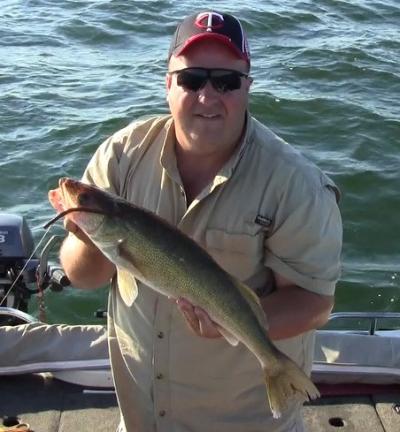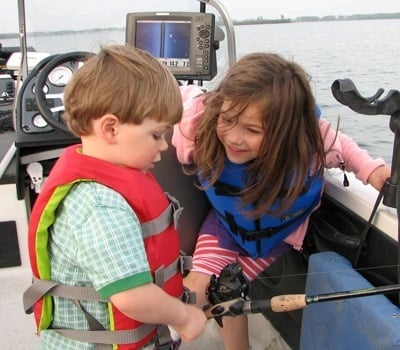.
Posts: 4179
Quote:
I guess the lake has been better, but I view fishing the lake as a sign of defeat.
Call me defeated, I guess…but if defeat looks like this, then I’ll sign up to be defeated every day of the week and twice on Sunday.









Quote:
I like the stuff I have had limited use with it but can atest that on the local metro lakes the trigger x crawlers are second to none when fighting off hungrey 3 inch gills! I must say those picks from holland are awsome and I can see a trip in the makings!!!!!!!!!!!!!!!!!!!!!!!And also must ask what is going onin the perch pic, seems like a boat load of jigs everywhere and some rod holder I’ve not seen?
Ben, live bait is not allowed in many places in Holland. They have taken fishing with plastics for zander (walleye) to an entirely new level relative to how we use them in the states. We have a LOT to learn from some of the top zander guys in Europe.
I believe the circular shape you’re referring to is actually a microphone holder on top of a video camera. We filmed a variety of short pieces to be used in Holland and Germany, and the cameraman’s camera is present in the bottom of that perch frame.
In my experience, in the lab and in the field, under a wide array of conditions, Trigger X baits work extremely well!

<img src="/wp-content/upload
Isolated patches of hard bottom surrounded by softer bottom. Here are some similar examples.
We were fishing 15-20 feet deep with F7s and F9s.
Give the new Flat Raps (8s) a try on the business end of your 3-ways. Those have been strong producers for me this year, both on 3-ways as well as behind boards in a crank/spinner trolling spread.
I’ve been through almost all of the leadcore lines on the market over the years. Sufix introduced a great leadcore line for 2010, and that has made its way onto all of my reels. So far, I’m VERY happy with the results.

From a previous thread:
Quote:
It all depends on whether you’re running glass or tin.
The shoot-through-hull transducer for glass boats is: XP-9-20
The skimmer transom mount transducer for tin boats is: XNT-9-20
You’ll need this Y-cable to do the split as well: AS-SIDB-Y
Those are the correct part numbers for the 898, even though they are not listed as such on the HB website.
I have used the 12-14′ trolling rods that are on the market, and find them to be a bit challenging to fish effectively. A rod of that length has to be pretty beefy to avoid becoming a buggy-whip.
The Mitchell 14 footers do a good job of pulling leadcore, but for a more finesse technique like bouncers, you’d want a medium power, moderate action rod to be able to load up a touch before the fish senses your presence.
I use St Croix Wild River 10.5′ rods for a variety of trolling applications, including pulling spinners on bouncers. You can find them at major retailers, and you can also order them from Dean @ Everts Resort/Deans Tackle Box.
Congrats on the nice finish!
That lake is full of 17.1-21.9″ heartbreakers! Just a touch too big or a touch too small to make it into the tournament limit.
Here are a couple more pics from the past couple of weeks of prefishing and competing down there.






All of my recent work is done with an 1197. I ran that unit and a 997 last season.
Thanks Ben, and congrats on your victory Sunday! I knew there were some bigguns in that area…..I broke two of them off!
You’re wrong, Steve.
Unless something has changed, PD V2s that are shipped with a pre-rigged i-Pilot are NOT shipped with a pedal. You cannot switch back and forth between pedal and i-Pilot control without completely removing/reinstalling the i-Pilot accessory. If you’re buying a PD V2 with an i-Pilot pre-rigged, you’re making a commitment to doing 100% of your trolling motor control with the hand-held remote. Whether that fits your style of fishing is up to you to decide. I know that it doesn’t suit mine.
Terrovas can switch back and forth seamlessly, and motors pre-rigged with i-Pilots do include a foot pedal control.
Are you certain that the software you were trying to upload is in fact a newer version that the software already loaded into the unit? If the software in the chip is the same as the software on the unit, nothing will happen.
Lots of differences!
First of all, the 997 is now discontinued. The replacement model is the 998. You’ll be hard pressed to find any 997’s left on the shelves.
Screen size is one difference.
Processing power is another (more horsepower in the 1197 and the 998 than in the 798).
Transducer and SI frequencies is a third (800 and 455 kHz frequencies and a high-definition SI transducer in the 1197 and 998, 455 kHz only with a standard-definition SI transducer for the 798).
Quote:
WOuld you mind posting those pics here? I would love to see them as I will be using my 1197 this summer on millacs for open water trolling and need to know what I am looking for.
I have a variety posted on my website:
http://www.jasonhalfenoutdoors.com/downimagingbait.html
http://www.jasonhalfenoutdoors.com/saugers.html
Here are some other awesome bait shots from this spring:
http://www.idofishing.com/forum/showflat.php/Number/879645/fpart/1/thats-a-lot-of-bait
No change in sensitivity at all; just switched between Max and Clear Switchfire modes under the Sonar menu tab.
Switchfire from Humminbird makes it possible for users to make the most of their 2D sonar under a wide variety of real-world fishing situations. For me, Max mode was the choice in slightly deeper water or in relatively calm water. Clear mode was the winner in shallow water or water that was stirred up by wind or current action.
For more ways to get the most out of your Humminbird fishing system, check out my (growing) library of instructional articles:
Next, we see some sonar images from a wind-swept, shallow flat that was 7-8 feet deep. Waves had been pounding this area for several days, and the water was really stirred up.
The first screen capture shows a split screen view of Down Imaging (on the right) and 2D on the left, with 2D set to Max mode. Note that the turbulence in the water (bubbles and small organic debris) is apparent in Down Imaging, and with Switchfire-2D set to Max, the 2D image is just about completely saturated with sonar returns. Not particularly useful, in my opinion.
However, Clear mode makes short work of this situation. The second image shows same area in a DI/2d sonar split view, with the 2D sonar set to Clear mode. Clear mode does a great job of eliminating the vast majority of the clutter caused by bubbles and suspended organic matter, and gives the user a very usable 2D sonar image (note that DI appears the same in both screen captures: all that stuff is still there in the water column, but Clear mode filters the vast majority of it out).
(EDIT: the third pic shows this same flat earlier in the week, before the wind started to beat it up. Note that the 2D view (Clear mode) is completely clean, the DI view has no suspended matter, while the SI view shows the expansive nature of the flat and the fish that are using it. I count at least three if not 4 fish that are plainly visible in Side Imaging; note the bright white spots and their associated shadows)
Quote:
Jason Haflen works at Skeeter boat center and probly will give the best info
Sorry, but I’m no longer affiliated with Skeeter Boat Center. You’ll have to contact them directly for help.
The Red Green way, which works just fine, is a bunch of wraps of black electrical tape to cover the hole that water is shooting up through.
As I said above, the pin pattern is different for the plugs running to the two transducers. There are 5 active pins coming out of the head unit roughly in the shape of a T. The central pin is active in both ends of the Y (it is present in both the 2D and SI transducer connectors…I believe it is to power the crystals in the transducers). In the 2D transducer, only the top pin is also active, while in the SI trandsucer, the left, right, and bottom pins are active. The Y cable ensures that all 2D data always comes from the 2D transducer, while SI/DI data is collected from the SI transducer (as well as temp, I believe).
(That pin info is from memory; I hope it’s correct!)
The GPS receiver has a 20′ cable, so no extension will be required for most installations.
Good clear view of the sky in all directions is the most important issue. Many people like to mount the puck as close to the transducer as possible, but since the typical GPS position error with the AS GR50 receiver is ~ 9 feet, anywhere in the back half of the boat will provide essentially the same results.
There is a different Y connector to run two SI transducers to deal with obstructions. I’ve seen that primarily on inboards.
I’d guess that the vast majority of users, particularly those with tin boats, do NOT run two transducers. It’s really not necessary, as a good SI transducer placement will provide all of the sonar data you need well into the 40 mph range. Here’s a screen capture from my Ranger 1860, running a single transducer, and collecting sonar data at 41.5 mph.
Quote:
Any H-bird guys know if the gps module on a bird is powered in the same way where a switch needs to be installed. I couldn’t find anything telling me to do so in those instructions.
Humminbird GPS receivers are powered by the head unit and do not require a switch.
Yep, yep, and yep.
It need to move down towards the bottom of the transom, and it needs to get closer to the motor and away from that angle. When you re-mount it, keep it away from the lines of rivets that are running parallel to the long axis of the boat. You may also consider mounting it on a transducer mounting board (< $15) so that re-positioning it doesn’t require yet another set of screw holes in the transom.
We need some pics. Show us your current installation from 2 perspectives; try to get the pics at the level of the transducer:
From the side
From behind
A third pic showing the hull ahead of the transducer would be helpful too.
That you’re collecting information at low speeds means that all of your components are working fine. Now we just need to deliver undisturbed water to the transducer.